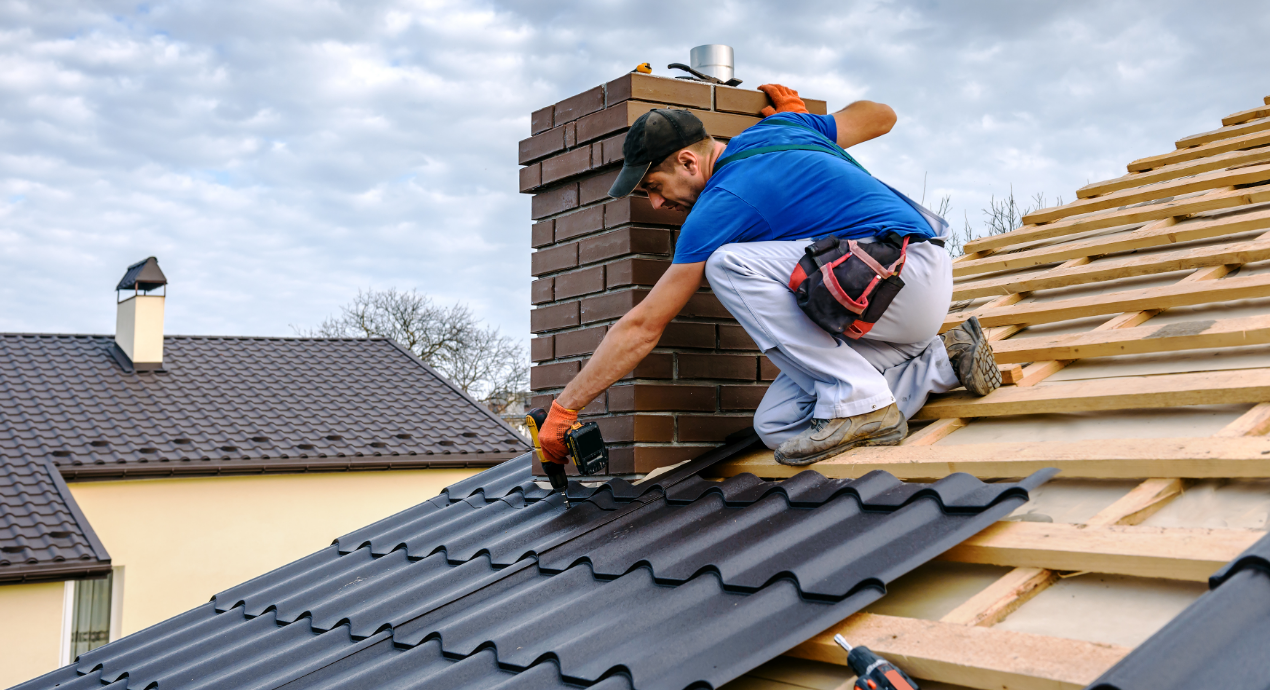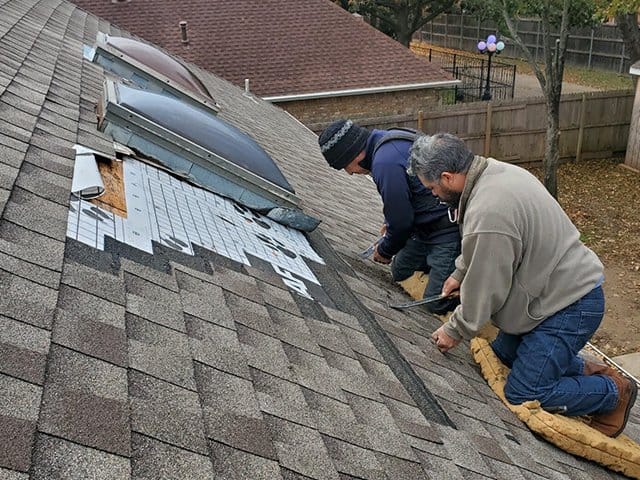Comprehending the Various Kinds Of Roofing Systems: A Comprehensive Guide for Homeowners
With a range of alternatives-- ranging from the standard gable to the contemporary level-- each kind presents one-of-a-kind benefits and difficulties that need to align with the home owner's particular demands and ecological considerations. As we discover the ins and outs of various roofing system kinds, it becomes evident that one dimension does not fit all; the ideal choice might surprise you.
Saddleback Roof
Gable roofs, identified by their triangular form, are among one of the most prominent roof styles because of their simpleness and efficiency in dropping water and snow. This design includes two sloping sides that meet at a ridge, allowing for efficient drain and reducing the threat of water build-up. The steep pitch frequently connected with gable roof coverings enhances their capacity to take care of heavy precipitation, making them ideal for various environments.
Along with their functional advantages, gable roofings provide aesthetic adaptability. They can be adjusted to different architectural designs, from traditional to modern-day homes. The design can likewise fit additional attributes such as dormer windows, which enhance natural light and air flow in the attic room space.
In addition, saddleback roofs supply ample area for insulation, adding to energy efficiency. Property owners can choose from a variety of roof products, consisting of asphalt roof shingles, steel, and ceramic tiles, better improving modification choices.
Despite their advantages, saddleback roofs might require added assistance in locations vulnerable to high winds or hefty snowfall. In general, the gable roofing system stays a favored selection because of its mix of capability, longevity, and visual allure.
Apartment Roofs
Flat roofs are commonly acknowledged for their minimal style and practical applications, specifically in commercial and business setups (oahu roofing). These roofings feature a horizontal or virtually horizontal surface, which enables for simple building and construction and flexible area usage. While they might lack the visual charm of pitched roofings, flat roofs provide countless benefits, particularly in urban settings where taking full advantage of area is essential
Among the key benefits of level roofs is their accessibility. Homeowners can utilize the roof covering room for numerous functions, such as rooftop gardens, terraces, or photovoltaic panel installments. Furthermore, level roofings are normally extra cost-effective to preserve and install compared to their sloped equivalents, as they require fewer materials and labor.
Typical materials utilized for flat roofing systems consist of built-up roof covering (BUR), modified bitumen, and single-ply membrane layers, each offering distinct benefits. In general, level roof coverings offer as a functional and adaptable choice for lots of house owners and services alike.
Hip Roofs
Hip roof coverings are defined by their sloped sides that converge on top, developing a ridge. This design stands out from gable roofings, as all 4 sides of a hip roofing system slope downwards toward the wall surfaces, providing an extra secure structure. The angle of the inclines can vary, enabling versatility in building aesthetics and functionality.
Among the key benefits of hip roof coverings is their capacity to hold up against hefty winds and unfavorable climate condition. The sloped surfaces allow much better water drain, decreasing the risk of leaks and water damage. Furthermore, hip roofs offer increased attic area, which can be utilized for storage space or perhaps exchanged habitable locations.
Nevertheless, building a hip roof can be a lot more costly and complicated than less complex roofing system types, such as saddleback roofs. The additional product and labor associated with producing the slopes and ensuring correct architectural stability can lead to greater expenses. Despite these disadvantages, several property owners favor hip roof coverings for their toughness, aesthetic allure, and potential for power effectiveness.
Mansard Roofings
Mansard roofings, often identified by their special four-sided layout, function two inclines on each side, with the reduced incline being steeper than the top. This architectural design, originating from France in the 17th century, is not only cosmetically attractive however practical, as it maximizes the functional area in the top floorings of a building. The high reduced slope enables more clearance, making it a perfect option for attic rooms or loft spaces, which can be read this post here exchanged living spaces.
Mansard roof coverings are characterized by their convenience, accommodating numerous architectural styles, from traditional to modern-day. They can be built with different products, consisting of asphalt shingles, slate, or steel, providing property owners with a series of choices to match their choices and budgets. Additionally, the style enables for the combination of dormer windows, enhancing natural light and air flow in the top levels.
However, it is necessary to consider the possible drawbacks. Mansard roof coverings might call for even more upkeep as a result of the intricacy of their layout, and their steep slopes can be testing for snow and rainfall overflow. In general, mansard roof coverings combine elegance with practicality, making them a prominent option amongst home owners seeking distinctive architectural attributes.
Lost Roofs
As homeowners progressively look for simpleness and functionality in their architectural layouts, dropped roofs have arised as a popular selection. Defined by a single sloping plane, a shed roof provides a minimalist visual that matches different home styles, from modern to rustic.
Among the key advantages of a shed roofing system is its uncomplicated building and construction, which commonly converts to reduce labor and material prices. This style enables efficient water drainage, minimizing the threat of leakages and water damages. In addition, the upright slope gives sufficient room for skylights, boosting all-natural light within the inside.
Dropped roof coverings also offer adaptability in regards to use. They can be efficiently incorporated right into enhancements, garages, or outdoor structures like structures and sheds. Moreover, this roofing style can suit various roof covering materials, including steel, asphalt roof shingles, or perhaps environment-friendly roofings, lining up with environment-friendly initiatives.
Nevertheless, it is vital to consider regional climate problems, as hefty snow loads may demand modifications to the roof's angle or framework. In general, dropped roofs present a functional and cosmetically pleasing alternative for home owners wanting to maximize functionality without endangering design.
Verdict


Gable roofing systems, identified by their triangular form, are amongst the most prominent roof covering styles due to their simplicity and performance in dropping check over here water and snow. oahu roofing. The steep pitch typically associated with gable roofing systems enhances their capability to manage heavy rainfall, making them ideal for different environments
While they may do not have the aesthetic charm of pitched roofing systems, level roofing systems use various advantages, specifically in metropolitan settings where making best use of area is critical.
